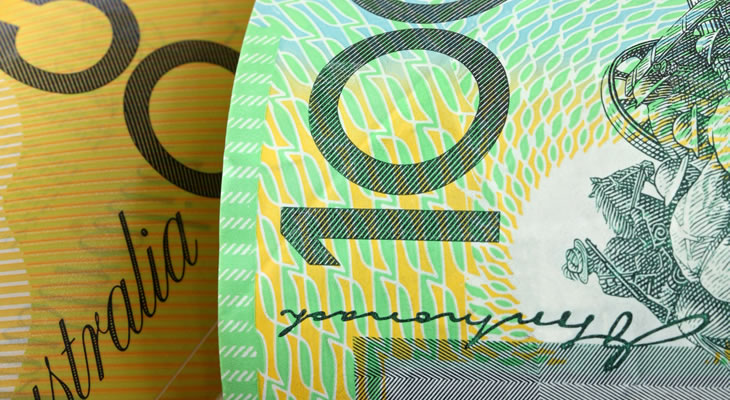Australian Inflation Misses Forecasts and Pound to Australian Dollar Exchange Rate Climbs
The latest Brexit developments left investors cautiously optimistic, while Australia’s latest inflation data was slightly disappointing. Ultimately, this improved the Pound Sterling to Australian Dollar (GBP/AUD) exchange rate forecast.
While still below last week’s opening levels 1.7823, GBP/AUD has put in a solid recovery this week so far and has risen from the week’s opening levels of 1.7682 to around the level of 1.7779 at the time of writing.
On Wednesday morning, GBP/AUD touched on a high of 1.7791, as Sterling (GBP) benefitted from Australian Dollar (AUD) weakness.
Following mixed demand for the Pound earlier in the week, investors have had a more solid reason to buy the currency since Tuesday evening as UK Prime Minister Theresa May appeared to take control of Brexit negotiations.
Similarly, the Australian Dollar’s own mixed movement became more of a bearish one as Australia’s Q2 inflation report fell short of forecasts in some key prints.
Pound (GBP) Exchange Rates Strengthen as UK Prime Minister Takes Control of Brexit Negotiations
Following broad Brexit-related uncertainties and concerns for much of the month so far, the Pound was finally afforded some relief this week in a cautiously optimistic reaction to the latest Brexit news.
On Tuesday, before Parliament wrapped up for its summer recess, UK Prime Minister Theresa May released a statement in which she indicated the UK Cabinet Office would now essentially take control of Brexit negotiations.
The Department for Exiting the EU, which used to be responsible for negotiations, was seemingly downgraded.
This bolstered market hopes that the May’s vision of a slightly softer Brexit was more likely to be met, with the influence of hardline Brexit supporters appearing to weaken. According to Neil Jones from Mizuho Bank Ltd.:
‘short-term Pound positive as it’s likely to lead to a softer Brexit,
The market will see this as the hard-line Brexiteers are on the way out. The pendulum will shift to a softer stance.’
Australian Dollar (AUD) Exchange Rates Sold as Australian Inflation Falls Short
Initially, the Pound was unable to benefit much from Tuesday’s Brexit developments as investors were firming in the Australian Dollar ahead of Wednesday’s key Australian data.
Wednesday saw the publication of Australia’s Q2 Consumer Price Index (CPI) inflation results. While the Reserve Bank of Australia’s (RBA) trimmed mean inflation prints all met forecasts, the overall inflation results both fell short.
Australia’s quarter-on-quarter inflation print unexpectedly remained at 0.4% rather than climbing to the expected 0.5%. Meanwhile, the yearly results only climbed from 1.9% to 2.1% rather than the expected 2.2%.
The data indicated that unless something changed, the Reserve Bank of Australia would have no reason to change its cautious stance on monetary policy within the foreseeable future.
This weighed on the Australian Dollar, and coupled with US-China trade war concerns investors perceived the risky currency as unappealing.
Pound to Australian Dollar Forecast: Further GBP/AUD Gains Ahead?
As Brexit jitters have softened slightly and Australia’s latest data disappointed investors, the Pound to Australian Dollar (GBP/AUD) exchange rate may mount a more solid recovery in the coming weeks.
Of course, it depends on how UK politics develop too. For example, if hardline Brexit supporters indicate that some kind of challenge to the UK Prime Minister could be made in order to stop her Brexit plan, the Pound will weaken.
On the other hand, if May’s position is seen as sturdy throughout the Parliamentary recess this could make investors more willing to keep buying Sterling.
The Australian Dollar, on the other hand, could be influenced by Thursday’s Australian export and import prices results from Q2.
If they don’t surprise investors though, developments regarding US trade protectionism are most likely to influence the Pound to Australian Dollar (GBP/AUD) exchange rate outlook in the coming sessions.


Comments are closed.